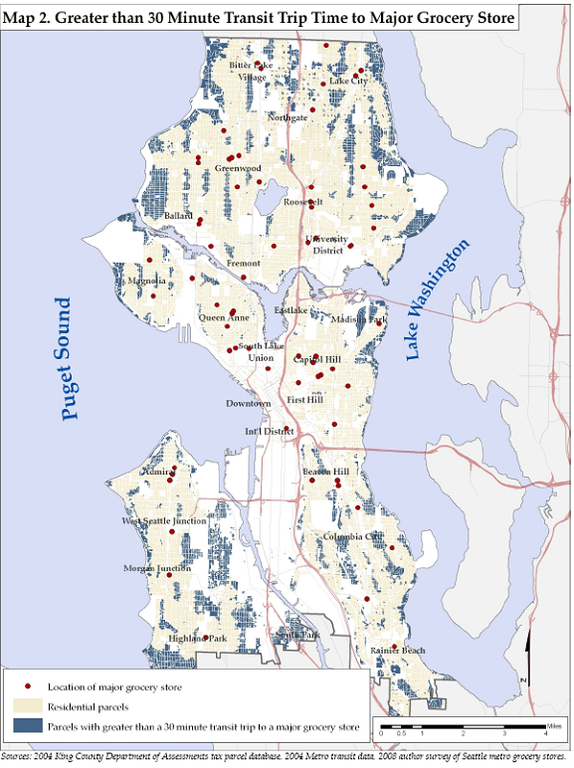It’s nice to see this kind of discussion about walkability and urban form — treating it as an equity issue, not a question of amenities. Foot-powered access to decent food is not just a question of “livability,” or even affordability, but really a question of justice. Especially nowadays in an era of rising fuel prices.
Here’s a sampling from the terrific article in the Seattle Post-Intelligencer:
In South Park… walking to the nearest Red Apple Market requires dodging a freeway cloverleaf of onramps.
…women worry about walking to stores alone at night, when the bus is infrequent and when fresh cherries cost more than a Hostess fruit pie. “Processed foods are basically what got us into this mess—they’re high in sugar, high in fats, high in sodium,” she said. “People have the knowledge of what they’re supposed to be doing, but they need support.”
In Delridge, residents may be just a mile from the nearest grocery store. But the street map looks like a jigsaw puzzle, with roads dead-ending into creeks, a steel plant, a golf course, a boarded-up day care and jungled hillsides.
There are also some interesting maps, both in the article and in a short memo on the subject.
The one below shows parcels (blue patches) that are more than a 30 minute transit trip from a major grocery story (red dots). This is precisely the sort of analysis and conversation cities should be actively engaged in. Good stuff.
That said—and not to take anything away from the valuable discussion—I’m a bit skeptical about this map in particular. Some of those allegedly transit-distant blue patches are really just a few minutes walk from grocery stores. So this map may not be terribly revealing of the real problem that low-income folks often lack decent access to groceries, even in a city.










Matt the Engineer
(considers how profitable opening up a grocery store in W. Ballard might be)I’d love to see this map continued outside the city, where transit seems to only focus on bringing you to downtown.